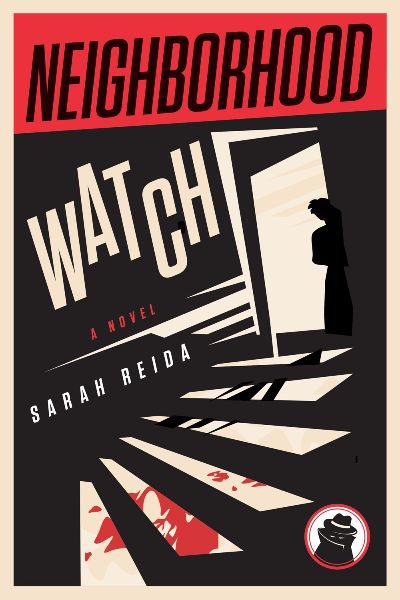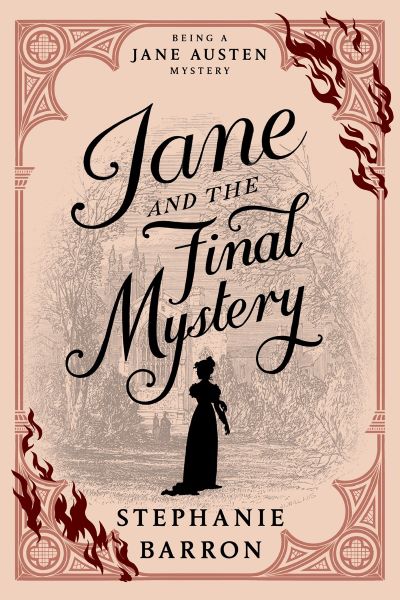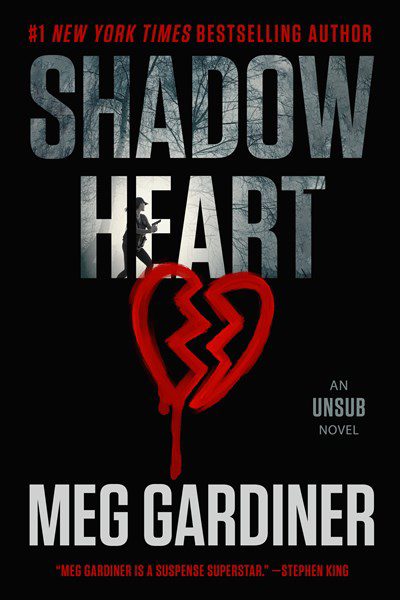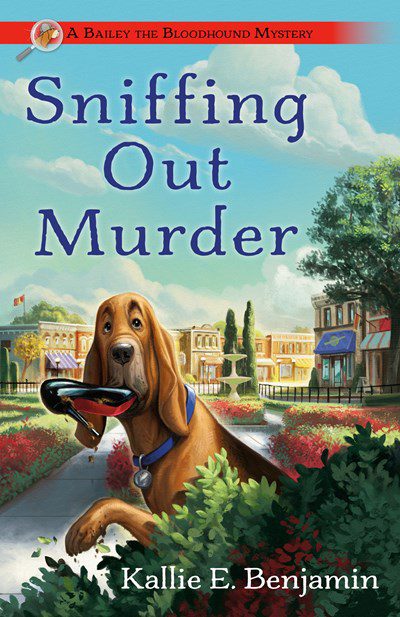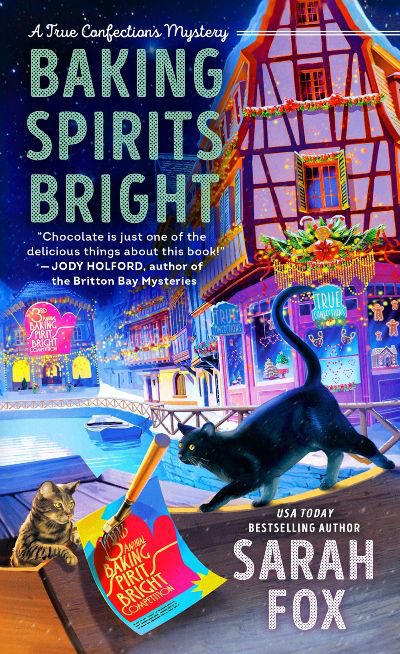This book could just as well be titled When the HOA Attacks or Ring Cameras on Steroids: A How-To. Oleander Court, a street in ritzy Alpharetta, GA, has it all. The fountain with $500 apiece koi, the perfectly maintained lawns (did I mention that HOA?), the perfectly Botoxed neighbors. But a few residents keep things from being too plastic. An artist, Helen Beecham, has moved in and while she likes to observe the others, she’s doesn’t love their snooty book clubs (at which the book is never mentioned) or other tortuous gatherings. A Korean American family, the Jungs, lives on Oleander, too, amid nasty comments; one neighbor in particular spreads the rumor that the mother barely speaks English, only Chinese. Lesbian couple Ray and Laura are hiding their rocky marriage and past secrets. And then there’s Adelaide, who formerly lived in a trailer park but is now married to a doctor and struggling to feel she belongs. Closed circle meets cozy when the nastier neighbors start getting bumped off in their homes, but with little attendant grisliness and dollops of dark humor. Come for the bitchiness, stay for the deep characterization of the oddball characters as well as the puzzling whodunit.
Women Sleuths
In March of 1817, Jane Austen is struggling to complete her latest manuscript, The Brothers, in spite of her declining health: “I, who enjoyed a riotous constitution throughout my four decades, had felt so little like myself in the previous twelvemonth that I found it hard to remember being free of pain.” But when the 15-year-old son of her widowed friend Elizabeth Heathcote (whose brother once proposed to Jane) is accused of the drowning death of a senior classmate at the prestigious Winchester College boys’ boarding school, she summons the energy to travel to Winchester with her beloved 19-year-old nephew, Edward, to investigate. There, she learns from Elizabeth that for the past three years, William had been the “subject of relentless attacks on his spirit, his mind, and his standing in the world.” He had been especially bullied by the sadistic late Arthur Prendergast, who enjoyed hazing the younger boys. Is there a connection between Prendergast’s murder, the malicious campaign against William, and an entailed inheritance that would benefit William? Jane is determined to clear William’s name before she succumbs to her illness. Over the course of 14 books, the multitalented Barron, who also pens spy thrillers as Francine Matthews, has brilliantly combined authentic historical and biographical details with skillful plotting and a credible evocation of Austen’s wry, distinctive voice. She brings the English author’s final investigation to a poignant, unforgettable close. Fans of this historical series will not be disappointed, and kudos to Barron’s excellent double-entendre title. While the earthly crime may be solved, the final mystery is one that we all will face.
In cozies, we often meet our hero when they are in a state of flux, and Death by Demo is a classic example. Jaime is recently divorced—her husband was having an affair—and the prenuptial she signed without reading has left her nearly broke. She and her ne’er-do-well ex-husband ran a highly successful construction and interior design firm in Charlotte, NC, but now all she’s left with is a dilapidated Queen Anne style house and her best friend’s couch. While everyone expects Jaime to sell the house, she takes a certain liking to it and decides to renovate it on her own. That’s part of what makes this book so interesting, watching Jamie—who’s a real carpenter—put the historic home back together while she ruminates on how her life fell apart. But in the midst of some serious demolition, she comes across a body walled up in her new home. Tragic, for sure. But also annoying, as the house is now declared a crime scene and Jaime is forced to abandon the one thing that’s keeping her sane. Until it dawns on her that maybe law enforcement needs a little help. Well-written, nicely plotted, with great insights into the renovation industry and a cute and sensitive next door neighbor. Cozy readers will delight in this discovery.
Gardiner shakes up the serial-killer genre with her latest thriller. FBI profiler Caitlin Hendrix visits serial killer Efrem Judah Goode in prison. He shows her detailed drawings of the women he has killed, but none of them are the victims he’s incarcerated for killing. He claims innocence for those women’s murders but is not innocent of being a murderer. There is a copycat called the Broken Heart Killer, and somehow Goode and this UNSUB are connected. Caitlin dives into the case and will once again put her career and life on the line for justice, while bringing closure to the families of the women Goode killed. What she uncovers will surprise even the most jaded reader. Gardiner has a gift for tackling gruesome and uncomfortable topics and giving the prose a literary spin. While other authors might wallow in the ugly, Gardiner makes it beautiful. Fans of true crime and the television show Criminal Minds should make Gardiner mandatory reading.
A classic—but in no way cliched—cozy that features a great lead, a best friend, murder(s), two uniformed love interests, a good dollop of gossip, and a bloodhound that pretty much steals the story. Priscilla (aka Pris) is a former teacher who just published her first children’s book, The Adventures of Bailey the Bloodhound, which has landed on the bestseller list. She’s now in the process of moving back to her hometown of Crosbyville, Indiana to finish the series when she comes across the mean girl to end all mean girls, Louboutin- and Givenchy-clad Whitney Kelley. Whitney is on the school board, and she can’t help but mouth off about everything she’s planning to cut—like social programs and art—and Paris’s favorite: a pet-assisted reading program (guess who stars in that?). Have no doubt, words are exchanged! Flip to the next morning, when Bailey and Pris are off on their walk, although Bailey won’t stop pulling Pris over to the begonia bed…and a very dead Whitney, face-down in the plantings. Readers will love this down-to-earth lead, big-time problems in a small town world, and the consistently fast pace of the narrative. Cozy fans may know Kallie E. Benjamin as V. M. Burns, the author of the Mystery Bookshop Mystery, Dog Club Mystery, RJ Franklin Mystery, and Baker Street Mystery series.
James L’Etoile uses his time working for the prison and criminal justice system to maximum effect at the start of this series featuring Detective Emily Hunter and her partner, Javier Medina. A businessman with ties to the Sacramento community is murdered in his home, and his wife is injured. The mayor wants answers and pressures Emily’s Captain to uncover the truth while ordering them to stay away from his widow. As the investigation progresses, the widow seems to have the answers they seek, but Emily and Javier risk being tossed off the case if they continue to prod her. More bodies start to appear, and a break-in reflects poorly on the dead businessman and his unscrupulous methods to maintain his job and charitable contributions. It doesn’t help that Emily is distracted by a family matter that seems to lead to a conclusion she cannot accept. The pacing and realistic feel of the investigation will appeal to fans of Michael Connelly, who enjoy a baffling crime to solve. Readers will be anxious for Emily’s next case.
The perfect introduction to the delightful Berenson, this volume brings together two previously published novellas—and five standard poodles!—set during Christmas in Connecticut. Narrated by the funny yet tough Melanie Travis, the first novella, Wagging Through the Snow, features Melanie’s brother, who spontaneously purchases a deserted Christmas tree farm without discussing the sale with anyone, including his business partner. When the family goes to check out the farm, they stumble across a corpse tucked into a drift of snow. Could things get any worse? Yes, and when Melanie, assisted by the ever-present curmudgeon Aunt Peg, starts to ask questions, motives abound. In Here Comes Santa Paws, Melanie gets a call from Claire, her good friend (and wife of Melanie’s ex-husband…it’s complicated), asking her to meet up at a client’s house. Melanie arrives at the home only to find the client, dead, lying in a pool of blood, and Claire waiting to be interrogated by the cops. Claire is acting weird—not that she doesn’t have every right to be upset—but once the cops are done with her she jumps in her car and races away without a word to Melanie. What’s going on? Leave it to Melanie and Aunt Peg to get to the bottom of the mystery. Lucky readers just discovering Melanie, her dogs, and her family have several armfuls of books to enjoy.
No sooner does San Francisco bookbinder Brooklyn Wainwright get a break from sleuthing at a Scottish castle than she’s invited back to Scotland for a wedding and must again save the day. On Christmas Eve, Brooklyn gets a call announcing that her friends Claire and Cameron—Laird McKinnon, thank you—are getting married in a week. Brooklyn, her partner, and her parents are soon off to Castle McKinnon, on the shore of Loch Ness. At first only Brooklyn’s (meticulously described) book-restoring skills are in demand, as the bride-to-be wants a precious volume from the castle’s extensive library repaired for her beau. Then Claire also confides that 12 books, all of them set at Christmas and some very valuable, are missing from the shelves. But that investigation soon takes a back seat as a young man who works at the castle is found dead, not the last to meet a sad end. There’s a lot packed in here, from yummy food descriptions (there might also be a drink or two) to a family whose members are intent on grabbing a noble title and from archery competitions to Scotland’s Hogmanay traditions. It all comes together beautifully to create an atmospheric puzzle that fans of the author and newcomers will find festive and engaging.
Rudolph, New York is one of those unique places where the holidays are celebrated 24/7/365. In fact, the town has branded itself as America’s Christmas town, and nearly every shop in the bustling downtown caters to some type of holiday need, including Mrs. Claus’s Treasures, the gift shop owned by our narrator, Merry Wilkinson. This holiday season, the town is in a lather over the local amateur production of the musical version of “A Christmas Carol,” with Aline, Merry’s mom, a retired opera singer, taking the lead role. From the leadership down to the cast and crew, rivalries abound and nearly everyone has an ax to grind. But when one of the cast members is found dead in Merry’s shop, everyone starts to look guilty, including Aline. This is an expansive cozy—with quite a number of characters floating about—but Delany never allows the reader to become overwhelmed. Fans of Donna Andrews will love this sixth installment in the series.
Yes, I would happily move to Larch Haven, Vermont—and after 20 pages in this book, you would too. Except, perhaps, for the slight issue with murder. Former actress Becca Ransom has taken up a new career as a chocolatier and moved back to hometown Larch Haven. All is going super—relatives are actually helpful, she has a best friend she can rely on—until she is cajoled into entering the Baking Spirits Bright holiday baking competition. Turns out this annual event isn’t just popular, it’s a beacon for the seriously anxious and unpleasant…one of whom ends up murdered, killed with Becca’s own chocolate chipper (ouch! It’s a six-pronged device used to break up chocolate or ice. Look it up.) We know the drill: Becca needs to solve the mystery to clear her record. But with a cute cop in her court, I wasn’t too worried. A fun, classic holiday cozy that features a great cast of characters.

